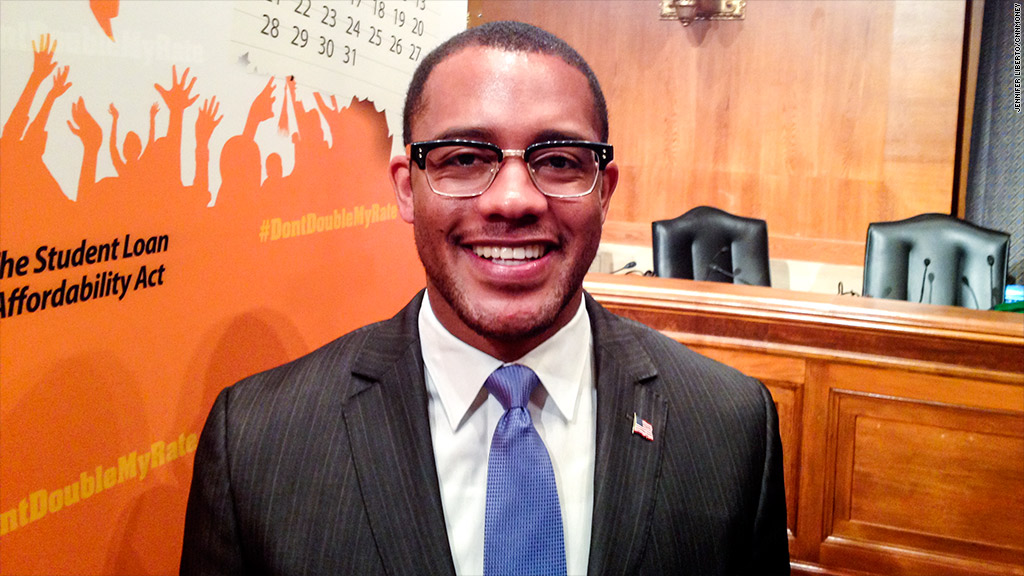
When Brandon Anderson takes a subsidized federal student loan this fall, it will be $1,000 costlier.
That's because Anderson is among 7 million undergraduates caught in the middle of a debate in Washington over whether to hold down, or let the 3.4% interest rate to double to 6.8% starting in July for undergraduates borrowing new subsidized federal student loans.
Anderson's route to college wasn't typical. A high school dropout, he served in Iraq in 2003 and 2004.
After his tour ended, Anderson returned to the state of Washington, where he was stationed. He completed his high-school level skills with a GED, and enrolled at the local Bellevue College, where he served as student body president.
Last year, Anderson doubled down on his education and transferred to the prestigious Georgetown University, where he is now studying for a Bachelor's degree in sociology, with hopes of running for political office one day.
Related: Student loan mess: What's at stake?
Because he served in the military, Anderson's education at Bellevue College was covered by the government. But the post-9/11 GI Bill only covers about $21,000 per year at Georgetown. The funding runs out before Anderson finishes college, so he will have to fend for himself for much of his senior year.
Transferring to Georgetown "has brought me incredible opportunities, but a top university comes with a high price tag," he said.
This fall, Anderson expects to take out $5,500 in subsidized Stafford loans for his last year of college. If Congress fails to act, his interest rate on the loans will double to 6.8%.

"My message to Congress is -- don't double my rate," said Anderson, 28, at a campaign to push for lower rates on Capitol Hill last week.
Anderson said he joined the campaign because he and most of his friends face crushing student loan debt. Anderson, who works two jobs, will start paying down his loans after he graduates next summer. In total, he will have a total of $25,000 in federal student loan debt.
"We can't use college as a sorting tool for the wealthy," he said.
Related: Class of 2013 grads average $35,200 in total debt
The impending July 1 rate hike will affect only undergraduates with subsidized loans, where the federal government absorbs some of the interest rate. This makes up about a third of government student loans, and they are awarded based on economic need.
Other undergraduate and graduate students who take out unsubsidized loans, have already been paying interest rates set at 6.8% since 2007.
Congress is expected to continue debating various plans the rest of this month. But it's looking increasingly likely that undergraduates with subsidized loans will be facing the higher rates.
